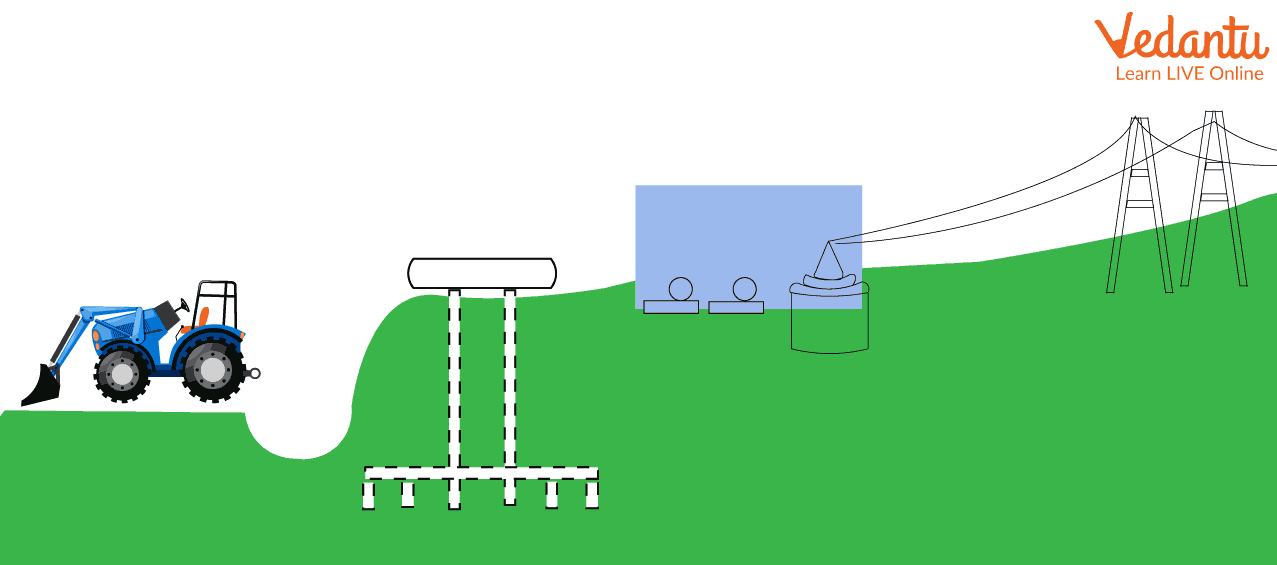




Introduction to Methane
Methane gas can be produced by distilling coal and natural gas or by the fermentation of organic substances. The biomass of extinct plants is affected by the heat and pressure of the earth, turning its energy-rich carbon molecules into raw materials from which methane can be extracted.
Natural gas primarily consists of methane. Methane combustion results in the release of energy in the form of natural gas. Both residences and businesses can make use of this energy. If left unused and released into the atmosphere, methane can be dangerous since it is more powerful than carbon dioxide in creating greenhouse effect. It is said to contribute 30% to global warming.
Different Uses of Methane
There are 5 uses of methane given below:
A greenhouse gas that impacts ambient temperature is methane. If it is liquefied, it can be used as rocket fuel. Since methane has a lower molecular weight and produces more heat per unit mass than kerosene, it is a better choice for rocket fuel.
Methane is used at home to power appliances like water heaters, stoves, and dryers. Methane dries up quickly. As a result, most methane that gathers in lakes, streams, or soil eventually escapes into the atmosphere. These are a few of the several uses of methane in everyday life.
Methane is utilised to produce electricity since it is a key component of natural gas. By using steam created by boiling water with methane as fuel, energy is produced by powering turbines.
Methane is a clean fuel when compared to other hydrocarbons since it emits less carbon dioxide per unit of heat produced. It is the main ingredient in biogas and CNG and is used as a fuel.
Methane is frequently used as a fertiliser. In addition, methane is utilised to create a variety of chemicals.
Why is Methane Used for Burning in Gas Fires?
Methane can be utilised in houses to power appliances like water heaters, stoves, and dryers. Methane dries up quickly. As a result, most methane that gathers in lakes, streams, or soil eventually escapes into the atmosphere.
On the other hand, methane that is produced underground and flows through soil might last for many years without changing.
It is abundantly present in natural gas reserves all over the world, burns quickly and reasonably cleanly with the byproducts of water and carbon dioxide, and is therefore particularly appealing as a commercial fuel substance due to its low cost.
Methane will mix with air and burn when a spark or naked flame is introduced, which is why the reaction is referred to as explosive.
How is Methane Used To Generate Electricity?
Using conventional technologies, such as chemical conversion or gas-turbine generator sets, methane can be transformed into liquid fuels or electricity. Billion-dollar capital investments as well as a sizable land area are needed for the functioning of these technologies.
Methane is created by microorganisms in the present biogas systems, which are then burned to power a turbine and produce electricity. The highest capacity that can be reached is when less than half of the biogas is turned into electricity.

Using Methane to Generate the Electricity
In the above image, cable lines are shown connecting the biogas plant and transmission lines. So, a biogas plant will generate electricity using biogas and the generated electricity will then distribute to the city through the transmission lines making effective use of methane gas.
Conclusion
Methane has significant environmental advantages over other hydrocarbons or fossil fuels, such as coal and gasoline made from refined oil, as it produces more heat and light energy per unit of mass while producing significantly less carbon dioxide and other pollutants that cause polluted air and unhealthy air. Methane is an extremely powerful greenhouse gas because the molecular links in its molecule make it 86 times more efficient at absorbing heat than carbon dioxide.
FAQs on Uses of Methane
1. Where can you find methane in nature?
Several more natural sources also release methane into the atmosphere. The main source is natural wetlands, where microorganisms break down organic materials without oxygen and release CH4. Termites, oceans, soils, volcanoes, and wildfires are examples of smaller sources.
2. What is the main reason methane gas is produced?
Agriculture accounts for over 25% of all man made methane production, while the energy sector, which includes emissions from coal, oil, natural gas, and biofuels, is the next largest source.
3. What makes methane a global warming factor?
Methane reacts in several dangerous ways as it is released into the atmosphere. For starters, methane typically exits the atmosphere through oxidation, when it is converted to carbon dioxide and water vapour. Methane contributes to global warming.









